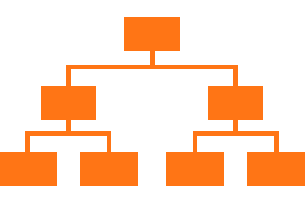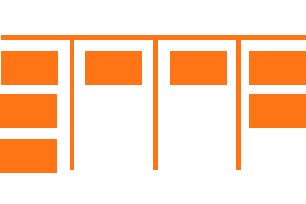As the need for scaling Agile practices grows, there is also a growing confusion about which of them are the best and which will actually fit your needs. At the first glance, most of the scaled approaches may look the same but in reality picking the right one is key for successful application. To help you choose your framework, we decided to take a look at Scrum of Scrums (SoS), Large Scale Scrum (LeSS) and Scaled Agile Framework (SAFe) and to write down the key differences as well as similarities between them to help you see how they stack up.
Interested? Let’s dive in!
Both SoS and LeSS rely solely on Scrum, applying its practices and roles at a larger scale. This makes these approaches ideal for teams that are already using Scrum and want to scale up without having to go through a large reorganization for it.
SAFe on the other hand, does not focus on a single approach and instead is based on Agile as a whole. It Adapts Agile values from the small team environment into a large organization and allows each team to choose which method they want to use, be it Scrum, Kanban, Scrumban or other. Due to this, the framework requires much more effort in the implementation, but is a great option for teams that do not want to be tied down to Scrum and have an ability to choose.
If you are running a company of a few Scrum teams and need to coordinate the work between them, SoS is a great option. It does not require much effort, but lets you put everyone on the same track and allows to overlook the process better. However, if you are looking to scale Agile in a larger organization, LeSS and SAFe are the options to choose from.
LeSS is ideal for a midsized company, where there needs to be a clear structure between the teams and some management level definition. While SAFe is perfect for defining the structure all the way up to the executive floor and therefore will prove to be the best scaled approach for large organizations that have a large corporate structure which needs to be maintained.
The framework with the least level structure coverage is SoS. While it does define the team structure and provides some definition of inter team coordination, there is no cover for the program and portfolio levels. This makes the approach great for day to day operations or small companies, but the long-term vision is lost alltogether.
LeSS takes one step further and adds some definition to the program and portfolio levels, allowing for a a better understanding of the higher level structure and maintenance of the overall vision. However, if you require a full set of rules for the company structure all the way up to the executive floor SAFe is the way to go. It provides detailed definitions for all company levels and thus creates an environment where Agile can be adopted through and through. However, with all of the rules and definitions one has to be prepared to have a longer adjustment period than with the other two.
Both SoS and LeSS keep the original Scrum attributes – meetings, roles, sprints, and adds just a little to make the scaling work. The Scrum of Scrums meeting (used in SoS and LeSS) is held every day after the daily standups of all teams. While within LeSS, additional backlong refinement and retrospective meetings are held to manage the shared backlog and to plan for the future.
SAFe also retains iterations and Agile practices on the team level, however it changes and adapts them a lot more for the 3 higher levels – Program, Value Stream and Portfolio. While the teams on each of these levels still operate under the premise of an iteration, new names such as Release Trains, Value Streams and Epics are assigned to them. The names of team roles are also changed, as well as new roles are added to accommodate the changed process and its requirements.
For the low cost implementation, teams should be looking at SoS and LeSS. As they are a natural progression of using Scrum, the teams already have the know-how and are simply adding a few more layers and practices to their daily routines. There is little to no training and restructuring, which means that the implementation costs will be slim.
When talking about SAFe on the other hand, no matter what Agile practice has been used beforehand, there will be a need to restructure and rethink the organization. This means that the transition will be more costly and most likely will take more time as well.
No matter which scaled Agile approach you want to go for, there needs to be an understanding of what you actually need – a simple and team focused option found in SoS, a mid-sized company solution with light weighed management of LeSS or a full on Agile transformation seen in SAFe. It is also important to remember what sort of costs come with each of these options and choose the right one not just for now, but for the future as well.










